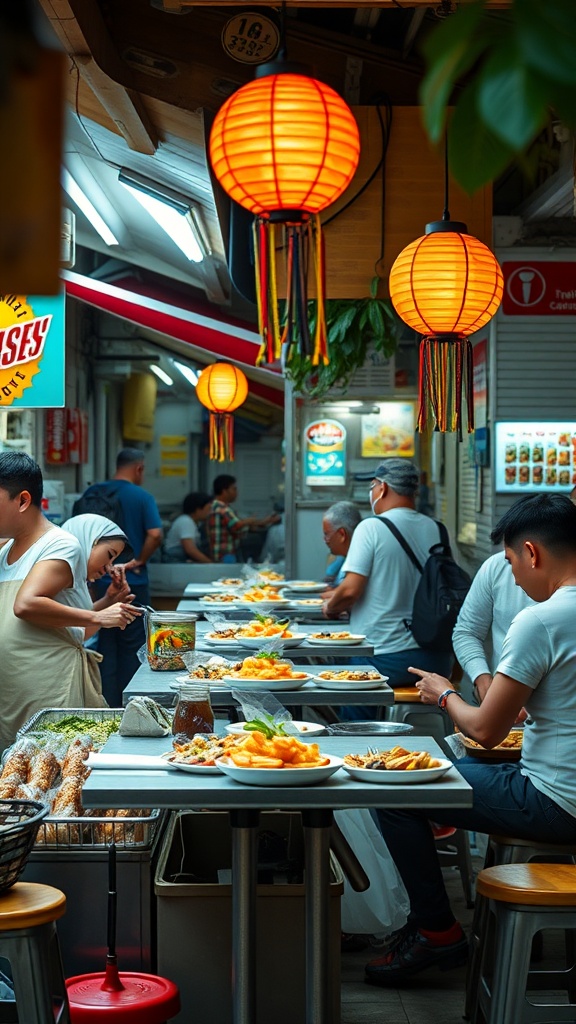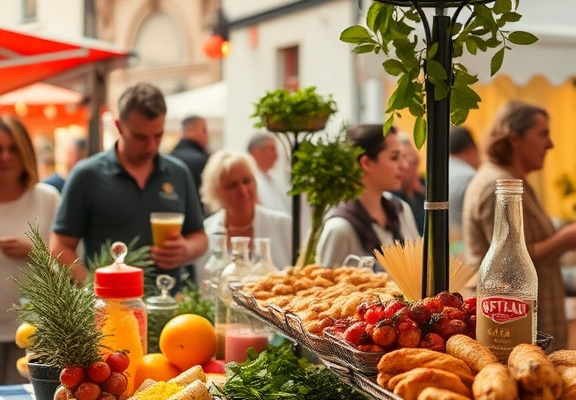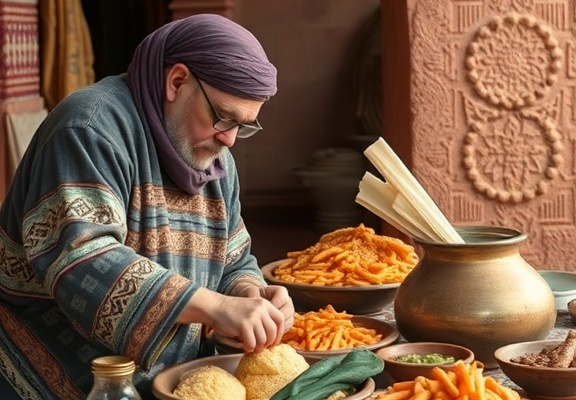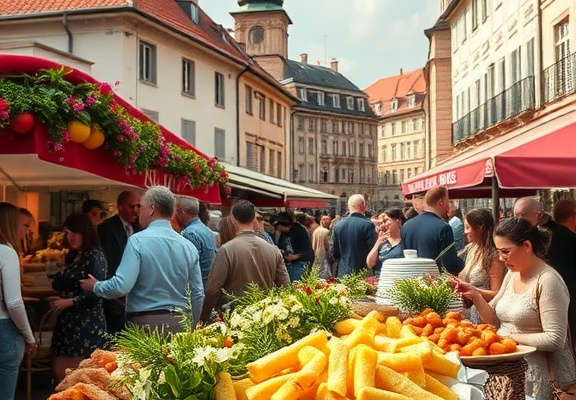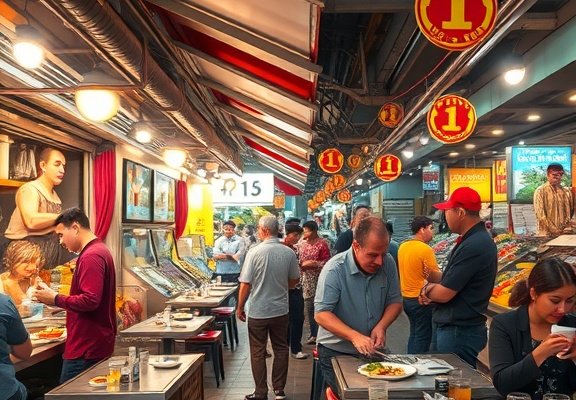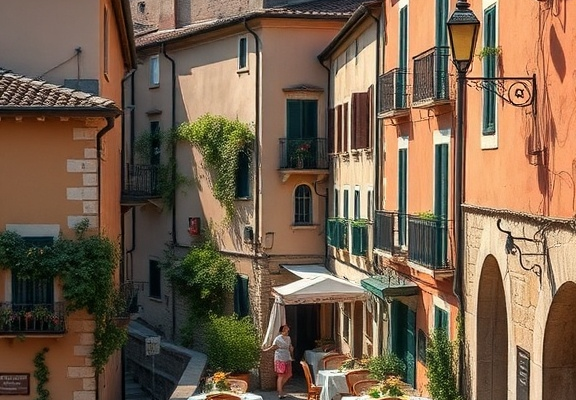The Thriving Culture of Street Food vs. Fine Dining in Singapore
In Singapore, the culinary landscape is richly diverse, boasting both vibrant street food and exquisite fine dining. Each offers a unique experience reflecting the country’s cultural melting pot. Understanding their differences can enhance your culinary journey in this fantastic city-state.
Thank you for reading this post, don't forget to subscribe!Street food in Singapore is an integral part of its cultural fabric. Hawker centers, which are hubs of local flavor, offer a plethora of affordable dishes. You can find delicious options like Hainanese chicken rice, char kway teow, and laksa. These dishes showcase the influence of Chinese, Malay, Indian, and Peranakan cuisines. The convenience of grabbing a quick meal at these centers is unmatched, making it a popular choice among locals and tourists alike.
One of the key factors contributing to the popularity of street food is its accessibility. Hawker centers are strategically located throughout the city, ensuring that no matter where you are, authentic Singaporean dishes are within reach. The affordability of hawker food makes it possible for everyone to savor the local flavor, with dishes typically costing between S$3 to S$6.
The experience of enjoying street food goes beyond just taste. The bustling atmosphere of a hawker center is alive with sounds of sizzling woks, chatter, and laughter. It’s a great place to immerse yourself in local culture and meet people. You may find families enjoying meals together, friends catching up, or even solo diners lost in their thoughts—everyone sharing a space filled with delicious aromas.
On the other hand, fine dining presents a different culinary experience in Singapore. With numerous Michelin-starred restaurants and award-winning chefs, the fine dining scene is vibrant and continuously evolving. These establishments focus on using premium ingredients and artistic presentations to create memorable meals.
Fine dining also emphasizes service, ambiance, and a carefully curated atmosphere. From elegant table settings to attentive staff, every detail is crafted to enhance your dining experience. Whether you’re celebrating a special occasion or simply indulging in a luxurious meal, fine dining lets you enjoy a more refined and unique culinary journey.
Fine dining restaurants often put a contemporary twist on traditional Singaporean dishes. For instance, you might find a modern rendition of chili crab served alongside a gourmet selection of wines to pair with your meal. With innovative chefs pushing the boundaries of culinary art, every visit can be a new adventure in taste.
When comparing street food and fine dining, both have their unique strengths, appealing to different experiences and budgets. Here’s a quick look at their differences:
- Cost: Street food is affordable, while fine dining often comes at a premium.
- Accessibility: Street food is widely available in hawker centers, whereas fine dining restaurants are usually in upscale locations.
- Atmosphere: Street food offers a casual and vibrant environment; fine dining provides a more formal and elegant setting.
- Flavor: Both boast incredible flavors, but fine dining often emphasizes artistry in presentation and technique.
As you travel through Singapore, consider tasting both worlds. Sampling street food allows you to appreciate the essence of what makes Singaporean culture truly unique. The dishes you find in hawker centers tell stories passed down through generations. Conversely, fine dining opens doors to culinary exploration, letting you experience the innovation and creativity of contemporary cuisine.
Ultimately, your choice between street food and fine dining should depend on what you’re looking for on that particular day. Do you want the authentic, heartwarming feeling of local hawker dishes, or are you in the mood for an extravagant gastronomic experience? Whatever you choose, both street food and fine dining in Singapore will leave a lasting impression and make your culinary adventure unforgettable.
Exploring Culinary Diversity: How Street Food and Fine Dining Reflect Singapore’s Heritage
Singapore is a bustling city known for its vibrant culture, and part of that vibrancy is its unique culinary landscape. Two prominent aspects of this landscape are street food and fine dining. Both reflect the nation’s rich heritage, showcasing the diverse influences that have shaped its gastronomy over the years.
The Essence of Street Food
Street food in Singapore is more than just quick bites; it’s a social experience. Hawker centers, filled with sizzling woks and fragrant spices, serve as gathering places where locals and tourists alike indulge in delicious meals. Here are a few highlights:
- Diversity: Singapore’s street food mirrors the multicultural makeup of its society. Malay, Chinese, Indian, and Peranakan cuisines intertwine, offering dishes like Hainanese chicken rice, laksa, and roti prata.
- Accessibility: Street food is accessible to everyone, with prices often ranging from just a few dollars. It represents the everyday life of Singaporeans, making it a vital part of the community.
- Authenticity: Many street vendors have passed down their recipes through generations, providing an authentic taste that highlights local flavors.
This vibrant street food culture challenges the notion that good food needs to be expensive or found only in upscale restaurants. Instead, it offers an array of flavors that are bursting with the spirit of the city. With every bite, you get a taste of history and a hint of the diverse communities that call Singapore home.
Elevating the Experience with Fine Dining
On the other end of the culinary spectrum lies the fine dining scene. High-end restaurants in Singapore are known for their innovative approaches and exquisite presentations. They place a strong emphasis on both quality and creativity. Some key features include:
- Artistry: Chefs in fine dining establishments often view their dishes as artworks. Using local ingredients, they create visually stunning dishes that tell a story.
- Global Influence: While fine dining reflects Singapore’s roots, it also incorporates international flavors. Many chefs blend local cuisine with global trends, introducing unique fusion dishes.
- Experiential Dining: Dining is not just about food in these venues; it’s about the entire experience. From the ambiance to attentive service, fine dining focuses on creating memorable moments.
The fine dining sector shows how culinary artistry can elevate familiar flavors into something extraordinary. Chefs pay homage to traditional recipes while pushing boundaries, making fine dining an intricate tapestry of cultural heritage and modern innovation.
The Intersection of Cultures
Both street food and fine dining in Singapore celebrate culinary diversity, yet they do so in significantly different ways. Street food is rooted in tradition, embodying the everyday tastes and techniques passed down through generations. In contrast, fine dining showcases an evolving culinary landscape where innovation plays a key role.
Consider this: a single dish can encapsulate the story of a community. For instance, the famed chili crab is a perfect example of how local seafood meets bold flavors to create a dish that can be enjoyed in both a casual hawker stall or a high-end restaurant. This fluidity in presentation makes it a beloved favorite among locals and visitors alike.
Additionally, both dining styles encourage cultural exchange. You might find fine dining establishments hosting events that highlight street food chefs, bringing their authentic flavors to a new audience. Conversely, food festivals often invite Michelin-starred chefs to create unique street food offerings, breaking down barriers between the two worlds.
A Celebration of Flavor
Ultimately, Singapore’s culinary diversity offers something for everyone. Whether you bite into a mouthwatering satay skewer at a bustling hawker center or savor the delicate flavors of a Michelin-starred dish, each experience contributes to a greater understanding of the nation’s heritage. Both street food and fine dining tell the story of Singapore—a place where cultures converge and culinary innovation thrives.
By embracing both traditions, Singaporeans honor their past while shaping their future. The street food scene provides comfort and nostalgia, whereas fine dining invites exploration and sophistication. In this vibrant culinary landscape, everyone’s palate can find a place, making Singapore a true food lover’s paradise.
Conclusion
Singapore stands as a vibrant epicenter of culinary experiences, where the contrast between street food and fine dining shines brightly. The thriving culture of street food showcases the nation’s rich heritage, celebrating the diverse flavors influenced by various communities. Hawker centers buzz with life as they offer affordable, delicious dishes that tell stories of tradition and innovation. In contrast, fine dining presents an elevated experience, blending creativity with culinary artistry. It reflects Singapore’s aspirations and the world-class status the city-state has earned, featuring gourmet twists on local ingredients that tantalize the palate.
Exploring the culinary diversity found in both realms highlights a unique balance in Singapore’s food scene. Street food brings a sense of nostalgia and comfort, with familiar flavors that evoke fond memories. Fine dining, on the other hand, invites you to indulge in a more sophisticated journey, pushing the boundaries of taste and presentation. Together, these two facets of Singapore’s culinary landscape represent more than just food; they embody the cultural fabric and history of the nation.
Whether you find joy in savoring a bowl of laksa from a humble stall or relishing a meticulously crafted dish in an upscale restaurant, both experiences are vital. Each offers a different yet equally rewarding connection to Singapore’s culinary identity. As you navigate this delicious dichotomy, you’ll discover that both street food and fine dining have their own stories to tell, together creating a rich tapestry that makes Singapore a must-visit destination for food lovers from all walks of life.

